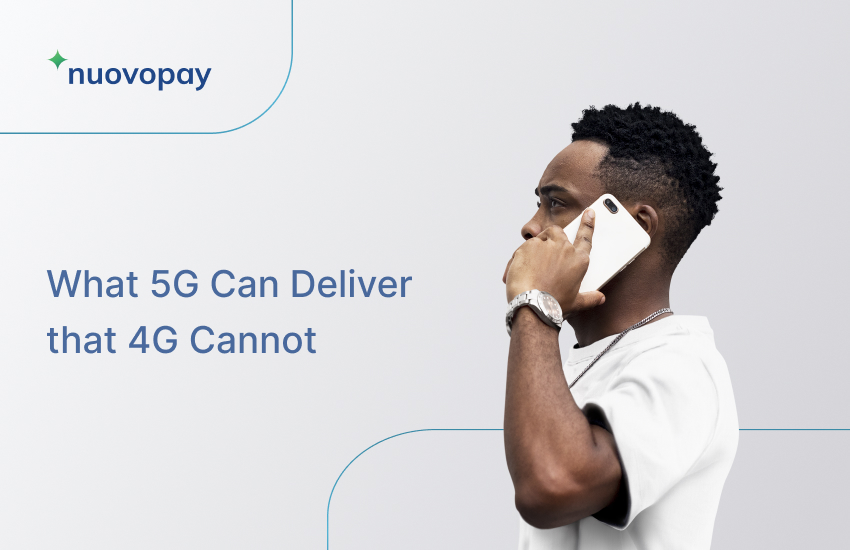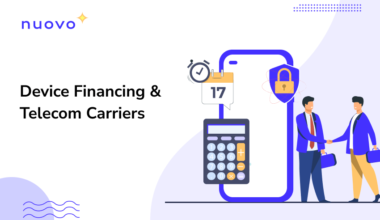The 5th generation mobile network has arrived, for many, if not for everyone. The world’s first 5G network was launched in 2019, and 210 service providers have now delivered 5G networks globally. 5G subscriptions also grew by 70 million in the first quarter of 2022 to 620 million, and that number is expected to cross the 1 billion mark later this year.

According to Vodafone, 5G promises to be up to 10 times faster than 4G, delivering ultrafast, reliable, and low latency connection.
5G VS. 4G: What’s the Difference?
5G supports an incredible density of up to 1 million devices in a one square kilometer area. That’s 100 times more than 4G LTE covers today while maintaining 99.999% availability. Let’s look at some of the other top features of 5G.
| Parameter | 4G | 5G |
|---|---|---|
| Download speed (peak) | 1 GB/sec | 20 GB/sec |
| Maximum bandwidth | 100 MHz | 1000 MHz |
| Download speed (real world) | 10 MB/sec | 100 MB/sec |
| Latency | 10 milliseconds | 1 millisecond |
| Maximum number of carriers | 809 | 210 |
New Realities with 5G Mobile Network
The majority of 5G-supported or enabled applications today are consumer-based. In addition to high speed, the network opens up new use cases that are not possible or feasible with 4G.
1. 8K Streaming
According to Vodafone, 5G promises device speeds around 10 times faster than 4G, suggesting high-quality 8K video streaming. Few telecom carriers have also demonstrated 8K or ultra high definition video streaming on commercially available 5G smartphones.
As data is transferred faster, it’s possible to transfer more data at the same time, making video streaming of superior quality without any noticeable difference or interruption.
2. High-speed Downloads
Faster downloads and low latency will save hours of downloading time. HighSpeedInternet.com compared the current internet speed and latency of 4G to approaching 5G and found that customers will save 23 hours of loading time (almost one day) per month while browsing social media, gaming online, streaming music, and downloading TV shows and movies. With 5G:
- Movie downloads will decrease from 7 minutes to 6 seconds
- Save 2 minutes and 20 seconds a day waiting for social media content to load
- Large game downloads will take 7 hours
- Download a Spotify library with 10,000 songs in 3 hours
3. Virtual Reality
The demand for virtual reality (VR) is on the rise and 5th gen enhanced mobile broadband is required to offer consumers an unmatched high-quality end-user experience. Maintaining an immersive experience at all times is crucial for VR, any form of lag, stutter or stalls will damage the user experience and comfort. The ultra-low latency and extreme throughput of the latest mobile broadband will help overcome this challenge.
4. Internet of Things
The IoT generates data from “anything” that generates data to the internet. Improvements driven by the 5th generation mobile network will help process large amounts of data in real-time which isn’t practical with existing technology. It facilitates higher speeds and allows connected devices to communicate and share data at higher speeds.
Not only is 5G faster but more power-efficient than 4G. The 5G mobile IoT technologies can enable devices with simple and efficient hardware that need longer battery life, allowing devices to send information from their location for months or even years.
For example, tracking assets in shipping containers that take months to reach their destination or protecting items from theft, adding a simple mobile device that sends reports for years without a power source.
5. Holographic Calls
Thanks to the new global wireless standard, consumers may soon be able to make hologram calls instead of video calls. For instance, Microsoft, its hologram communication technology is based on a headset called HoloLens 2. This technology is currently aimed at business customers, German engineering group Thyssenkrupp is putting the technology to practical use.
The company used to have to fly its technicians around the globe to make repairs. Now employees can instead use the headsets to connect in 3D form with a local technician, guiding them through the work that needs to be done.
Read more: Can New, Affordable Smartphones Outperform an Old Flagship?
Wrapping Up
4G technology isn’t going away anytime soon, but the evolution of the 5th generation mobile broadband has created more possibilities to support a variety of new applications and use cases. And the proliferation of IoT devices generating massive volumes of data will need 5G to deliver mainstream use. However, new technology is always expensive and the new generation of the mobile network is no exception. This would impact the affordability of 5G-enabled mobile devices, driving the need for innovative financing solutions.





